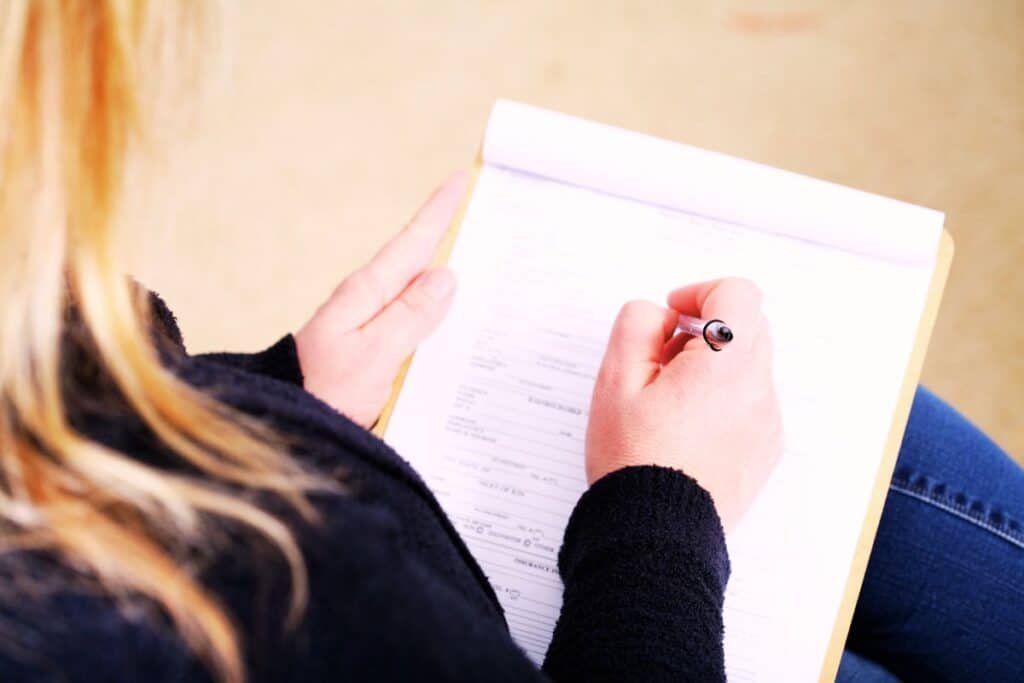I’m going to be blunt here.
If adults could spot the signs of grooming, there wouldn’t be 150 different online apps used to groom children.
Why? Because we’d have identified how groomers act online and make it impossible for children to be groomed online.
There also wouldn’t be an 82% increase in online grooming between 2017 and 2023 .
There wouldn’t be children who are being groomed online in less than 45 minutes.
So, forgive me for saying, that no, adults can’t spot the signs of grooming.
We’re sh*t at it.
We’re so bad at it that one study even discovered that the overt grooming behaviours used to desensitise a child to touch and gain access to the child were not recognised or reported as being inappropriate or as acts of grooming at all.
Why Can’t Adults Spot the Signs of Grooming?
The short answer is this: it’s because so many grooming behaviours can be explained as normal adult and child interactions.
And even if we do suspect signs of grooming, I’ve had countless conversations and seen many examples in the media of professionals who have reported their concerns, only to have them knocked back and being told that they lack evidence or their concerns are probably nothing.
The Non-Physical Signs of Grooming
As adults, I feel that we are often on the lookout for acts of violence that leave physical signs.
I teach foundation safeguarding training, and the signs of abuse that are often discussed include very physical and tangible signs.
For example, bruises, bleeding, broken bones, unclean clothes, unwashed/unkempt appearance, lack of money, lack of food and shelter, and not taking medication correctly.
However, with grooming, the signs are very unlikely (if at all) to be visible. This is because groomers adopt techniques that don’t rely on the use of violence, force, or threats to gain their victim’s trust and compliance.
Such perpetrators can be very dangerous because the signs of grooming are harder to spot.
Because of this lack of physical signs, grooming can be challenging to spot.
A large amount of the literature on sexual violence centres around sexual abuse and assault. However, there is limited research into the acts of grooming that can happen before an act of sexual violence takes place.
Red Flag Behaviours That Could Be Signs of Grooming
There are a whole multitude of behaviours that should raise red flags in people’s minds when it comes to grooming.
The reason that most of these red flags aren’t seen at the time is because grooming is a subtle, manipulative, and calculated process. Often, it’s only with the hindsight of a whole situation do we connect the dots and identify a pattern of grooming behaviours.
That being said, there are some red flags to be aware of. These include:
- An older person showing interest in someone younger than them
- Receiving a large amount of gifts from an individual – these do not need to be expensive
- Becoming withdrawn
- Not spending as much time with friends and family
- Changing hobbies; either withdrawing from a hobby or becoming more interested in the hobby (especially if the hobby includes meetings)
- Spending more time online
- Being secretive about who they are talking to
This isn’t a complete list of red flags and most of these you will likely read and think that they could apply to anyone in your life.
And that’s the point of why we miss the signs of grooming.
Because they are unobvious and, on their own, rarely raise alarm bells.
The Prevalence of Grooming in Sexual Abuse
If you need reminding, grooming takes place in at least 30-40% of cases of sexual violence.
It seems that we are missing key opportunities to prevent acts of sexual violence from occurring because we aren’t aware of what to look for. We need wider public awareness to bring the signs of grooming to the forefront of everyone’s minds.
Only then may we be able to prevent more acts of sexual violence from occurring.
In my case, there were plenty of warning signs of grooming, which could have led to an intervention and prevented me from being sexually assaulted. The truth is that these warning signs were not picked up on, and consequently, what happened to me, happened. I am in no doubt that my experience of sexual assault, could have 100% been prevented.
And if that situation could have been prevented, I wonder how many other rapes and sexual assaults could also have been prevented.
If only the warning signs of grooming had been picked up on earlier.
If only.
Seeing Into the Future
Another reason that adults are rubbish at spotting the signs of grooming is that unless we’re Mystic Meg, we can’t see the future.
We can’t tell if the behaviours we are being subjected to are normal or if someone is suddenly going to take that trust and rapport that they have built and turn it against us.
To this end, in her popular blog, Dr. Jessica Taylor estimates that we all know between 10 and 20 abusers.
Whilst this particular piece of information isn’t backed up by any research that I could find, it raises the point that we don’t necessarily know who we’re spending our time with.
And just because there’s nothing on a DBS check, it doesn’t mean that someone hasn’t committed a sexual offence.
It just means that they haven’t been caught.
How Old are ‘Children’?
Often, when we talk about grooming concerning child sexual exploitation, people mishear the word ‘child’ and imagine individuals who are of primary school age.
However, this ignorance of the definition of a child leads to many signs of grooming in teenagers not being picked up on.
It’s important, therefore, for everyone to remember that people are legally children until they reach their 18th birthday.
How Groomers Take Advantage of 16-17 Year Olds
Groomers often take advantage of the legal parameters that affect 16-17-year-olds.
This is because these children are above the age of sexual consent but below the age of legal majority.
This ‘grey area’ means that there is not enough information available to the public about how groomers target young people in this age group.
Because so many campaigns about grooming and sexual exploitation are aimed at those under 16 years old being the victim, there is a general public complacency as to how grooming works with older teens.
As a result, groomers take advantage of this ignorance.
This leads to a key reason why we don’t spot grooming behaviours aimed at older teens: as a society, we aren’t looking for them.
In the eyes of society, these teens are older, wiser and can look after themselves.
Summary
So, in short, can adults spot the signs of grooming?
No.
Because we’re looking for the wrong thing in the wrong place. And often, the thing that we aren’t looking for is staring us straight in the face.
What are the early signs of grooming?
Early signs may include increased secrecy, emotional distancing from friends or family, receiving gifts, changes in behaviour or interests, and increased online activity.
Are the signs of grooming always obvious?
No. Grooming is often subtle and manipulative. Many signs can appear harmless or typical of adolescence, which is why they’re often missed.
Can grooming happen without physical contact?
Yes. Many groomers build emotional and psychological control without ever touching their victim. Online grooming often involves no physical contact at all.
Why do adults miss the signs of grooming?
Because grooming behaviours can look like normal adult-child interactions. Many adults also lack the training or confidence to challenge what they observe.
This post is adapted from a section of It's All Your Fault - due for release in 2025.



